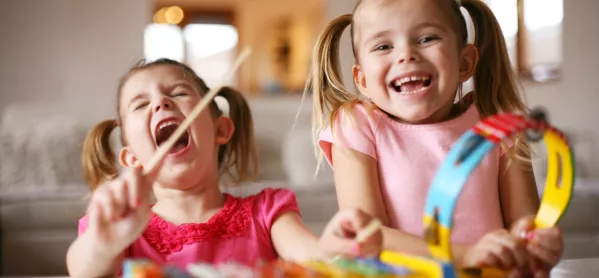- Home
- ‘Music should be the beating heart of primary’
‘Music should be the beating heart of primary’

In primary education, we’re awash with opinions about the curriculum. Some schools plaster "Intent, Implementation and Impact" on every corner, and a quick scroll down edu-Twitter brings up post after post about knowledge organisers and curriculum maps. Instead of Pierre de Coubertin’s Olympic cry of "faster, higher, stronger”, the current motto to achieve a gold-medal-winning curriculum appears to be “transfer, broader, deeper”.
Among the roaring sea of advice about history, geography and RE is a subject that lies at the heart of many a primary school today. It’s one that never appears in the curriculum debate but still underpins, enhances and underlines so many educational experiences.
Quick read: 'Swapping Mozart for Stormzy boosts literacy and numeracy'
Opinion: My daughter just wants to dance. So what’s stopping her?
Advice: Not all schools can sing hymns. But if not hymns, then what?
This subject has existed for thousands of years – since way, way before the first primary school gathered a class of children, all wearing plimsolls, in a circle. It’s one that has the power to move people, to elicit tears of joy, sorrow, elation. In a heartbeat, it can transport you to a moment in time or one that can stop you in your tracks.
It is of course, music.
The subject hinges on the proliferation and creation of sound, and yet the music curriculum is played on a muffled drum. If you listen carefully, it is the score for the overture of primary education.
There’s the bright-eyed faces singing nursery rhymes, the maraca-wielding chaos of an early years foundation stage music and movement session, the furrowed brow and squealing of bow strings as juniors attempt to produce a sound that doesn’t make your ears bleed.
Assembly halls echo with songs of spring chickens, autumn days and bright, beautiful things. End-of-term productions feature shuffling mumblers and flush-cheeked future entertainers – both being mouthed at from kneeling teachers nursing well-thumbed scripts and willing no one to fall off the stage (again). Playgrounds reverberate with skipping and clapping songs carried on the wind along to the group of children practising the latest YouTube dance craze, be it sharks, flosses or dabs.
Tune into the power of music
Who could forget the inevitable woodwind musical baptism? Children wrangle clumsily to wrap crayon-stained fingers around chewed recorders while shrieks of Three Blind Mice echo along the corridor. Music stands are wrestled with, adjusted and wrestled with again in assemblies – one always collapsing just at an inopportune key change. In the centre of all of this is the elderly and statuesque primary school piano. Usually draped in a cloak of patchwork children’s sewing from a school anniversary, this proud old lady is wheeled out at everything from harvest to the long-serving caretaker’s leaving assembly.
Music is central to most of primary school life.
But music isn’t trending on Twitter. It’s not being mentioned in much of the current writing about curriculum changes or inspection handbooks.
And yet it’s the soundtrack to many milestones. Weddings, funerals, first dances, lost loves, angry teenage years: they’re all reflected in music. We sing to our own children and those of our friends and family on their birthdays. We hum lullabies, scream sports anthems, cry over lost loves to melodies on the radio, judge the quality of other people’s singing on Saturday nights. We will hum while we work, tap rhythms while we are waiting, and pay over the odds to see our favourite bands. So why, then, the muffled drum?
A squeaking recorder, a shrieking violin and a squealing amateur choir may not seem the immediate focal point when revisiting the curriculum. But, when you see the impact music can have when implemented – the soaring chorus that brings parents to tears, the joy and pride on a child’s face when they realise they can replicate and create their own music – it is surely unarguable that our intent should be to ensure music is the beating heart of our curriculum.
Emma Turner is the research and CPD lead for Discovery Schools Trust, Leicestershire
Keep reading for just £1 per month
You've reached your limit of free articles this month. Subscribe for £1 per month for three months and get:
- Unlimited access to all Tes magazine content
- Exclusive subscriber-only stories
- Award-winning email newsletters



